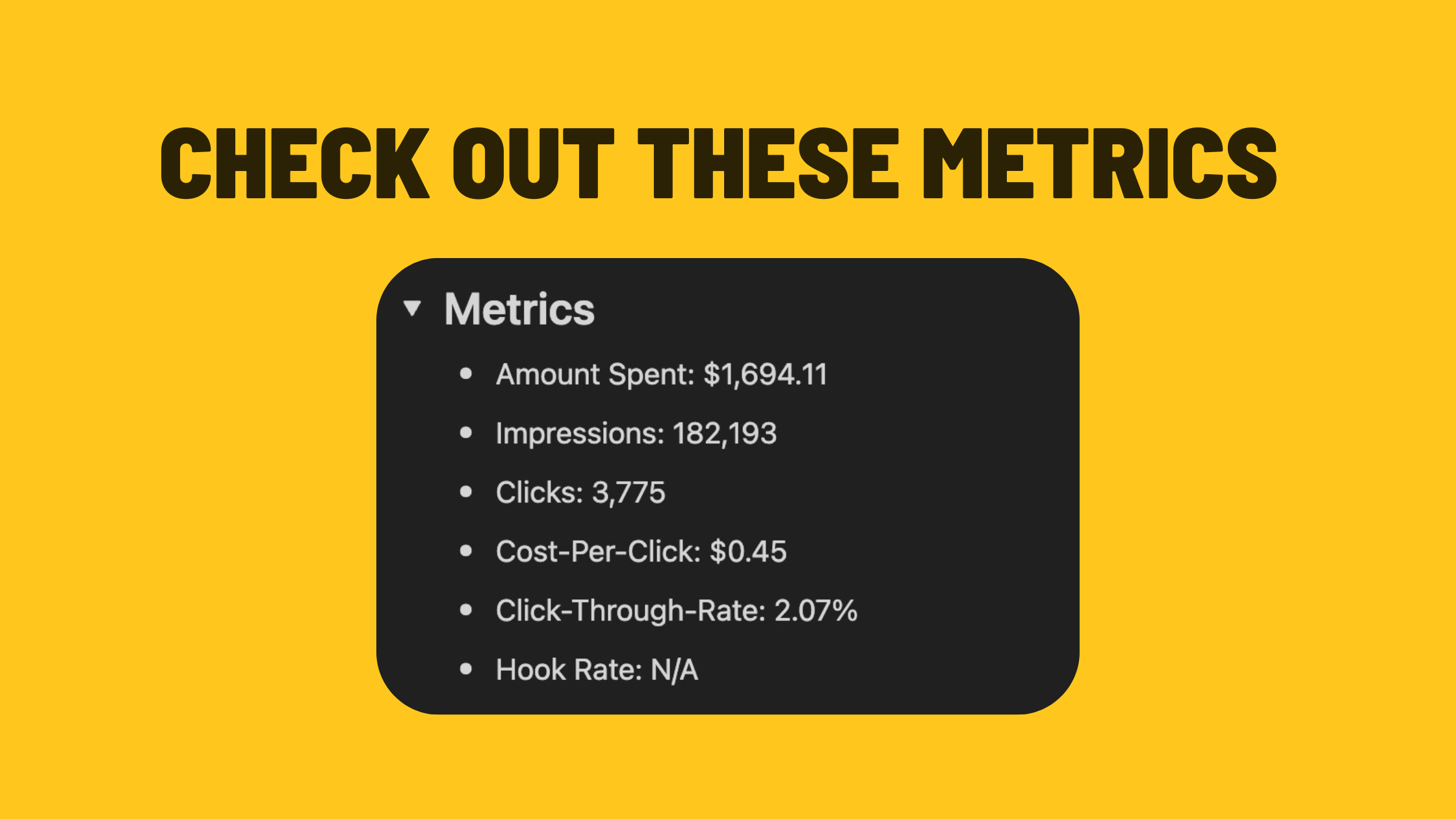5 Ways to Create a Better Landing Page
Creating a landing page is an essential part of any marketing campaign.

Creating a landing page is an essential part of any marketing campaign. Whether you're running a Google Ads campaign or promoting a new product on social media, a well-designed landing page can make all the difference in turning visitors into customers. In this blog post, we'll explore 5 ways to create a better landing page.

Keep it Simple - Keeping your landing page design simple is important for creating a page that is visually appealing and effective in converting visitors into customers. Here are some reasons why simplicity is crucial:
- It makes your message clear: A simple design ensures that your message is clear and easy to understand. By keeping the focus on the most important information, visitors are more likely to understand what your product or service is about and what they need to do to take action.
- It reduces distractions: A cluttered landing page can be overwhelming for visitors, making it difficult for them to focus on what's important. By simplifying the design, you can reduce distractions and help visitors stay focused on the message you're trying to convey.
- It improves loading time: A simple design can also improve the loading time of your landing page. Large images, videos, and complex designs can slow down your page, causing visitors to lose interest and leave before the page has even loaded. A simple design can improve the user experience and prevent visitors from leaving due to slow loading times.
- It creates a professional impression: A simple design can create a professional impression that can help build trust with visitors. A well-designed and simple landing page can convey a sense of professionalism and expertise, making visitors more likely to take action.
Focus on the User - When designing a landing page, it's crucial to put the user's needs first. This means creating a page that's easy to navigate, with content that's relevant and helpful to your target audience. Here are some tips to help you focus on the user:
- Conduct audience research: Before you start designing your landing page, take the time to research your target audience. This includes understanding their pain points, motivations, and goals. Use this information to create content that speaks directly to their needs and interests.
- Use clear and concise language: Your landing page should be easy to understand and free of jargon or technical terms that may confuse your audience. Use simple, straightforward language that's easy to read and digest. If you're targeting a specific audience, consider using language that speaks directly to them (e.g., using industry-specific terms or references).
- Address pain points: Your landing page should address the pain points of your target audience and offer solutions to their problems. Highlight the benefits of your product or service and explain how it can help solve their challenges or make their lives easier.
- Make it easy to navigate: Your landing page should be easy to navigate, with a clear hierarchy of information. Use headings and subheadings to break up content and guide visitors through the page. Make sure your call-to-action (CTA) is prominently displayed and easy to find.
- Test and optimize: Once your landing page is live, use A/B testing to test different elements (e.g., headlines, CTAs, images) and see what resonates best with your audience. Use analytics tools to monitor your page's performance and make data-driven decisions to optimize it over time.
Optimize for Mobile - Optimizing your landing page for mobile is essential in today's digital landscape. With more people using their mobile devices to browse the internet than ever before, it's critical that your landing page is optimized for smaller screens and faster load times. Here are some tips to help you optimize your landing page for mobile:
- Use responsive design: Responsive design is a design approach that automatically adjusts the layout of your landing page to fit the screen size of the device being used. This means that your landing page will look great on both desktop and mobile devices, without the need for separate mobile-specific pages.
- Simplify your design: To ensure your landing page loads quickly on mobile devices, it's important to keep your design simple and streamlined. This means using a minimal number of images and keeping your content concise and to the point.
- Optimize images: Images can significantly slow down your landing page's load time, especially on mobile devices. To optimize your images for mobile, compress them to reduce their file size without sacrificing quality. Use image optimization tools like TinyPNG or Squoosh to make the process easier.
- Use clear and concise language: On mobile devices, visitors are more likely to skim through your content rather than read it in-depth. Use clear and concise language that gets straight to the point and conveys your message quickly.
- Test your landing page on mobile devices: Before launching your landing page, make sure to test it on a variety of mobile devices to ensure that it looks and performs as expected.
Use Compelling Visuals - When it comes to creating a landing page that converts, visuals play a crucial role. In fact, research has shown that people are more likely to remember information that's presented visually than text alone. Here are some tips for using visuals effectively on your landing page:
- Use high-quality images or videos: When choosing visuals for your landing page, make sure they are high-quality and visually appealing. Grainy or blurry images can make your page look unprofessional and could turn off potential customers. Also, make sure your images and videos are relevant to your product or service.
- Showcase key features and benefits: Use visuals to highlight the key features and benefits of your product or service. For example, if you're selling a fitness program, you could use images or videos of people working out to showcase the program's effectiveness. Or, if you're selling a new app, you could use screenshots to highlight its user interface and key features.
- Use captions and labels: Adding captions or labels to your visuals can help visitors understand what they're looking at and how it relates to your product or service. This can be especially helpful if you're using technical images or charts.
- Consider using animations or interactive visuals: Animated visuals or interactive elements can be a great way to engage visitors and make your landing page more dynamic. For example, you could use an animated infographic to highlight key statistics or use interactive elements to allow visitors to explore your product in more detail.
Test and Refine - Testing and refining your landing page is a crucial step in the process of creating an effective page that converts visitors into customers. Here are some tips on how to test and refine your landing page:
- Use A/B testing: A/B testing, also known as split testing, involves creating two versions of your landing page and testing them against each other to see which performs better. You can test different elements such as headlines, CTAs, images, and more. By testing different variations, you can identify which elements are working well and which ones need improvement.
- Use analytics tools: Analytics tools such as Google Analytics or Hotjar can help you track the performance of your landing page. By monitoring metrics such as bounce rate, conversion rate, and time on page, you can identify areas for improvement and make data-driven decisions to optimize your landing page.
- Monitor user behavior: User behavior on your landing page can provide valuable insights into how visitors are interacting with your page. Heatmaps, for example, can show you where visitors are clicking and where they are spending the most time on your page. This information can help you identify areas for improvement and optimize your landing page for better performance.
- Continuously refine: Once you've identified areas for improvement, make changes and test them again. Continuous refinement is key to creating a landing page that performs well over time. Don't be afraid to make big changes if necessary, but make sure to test them thoroughly before making them permanent.
.svg)



